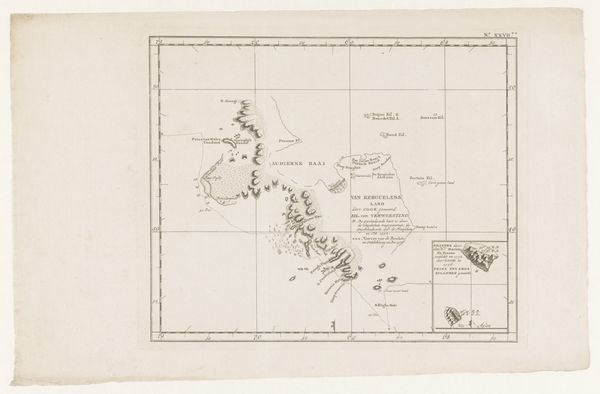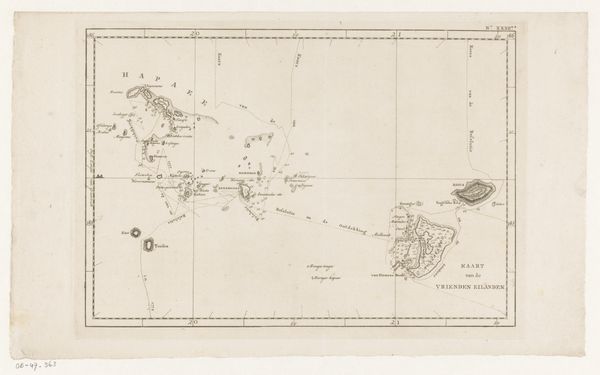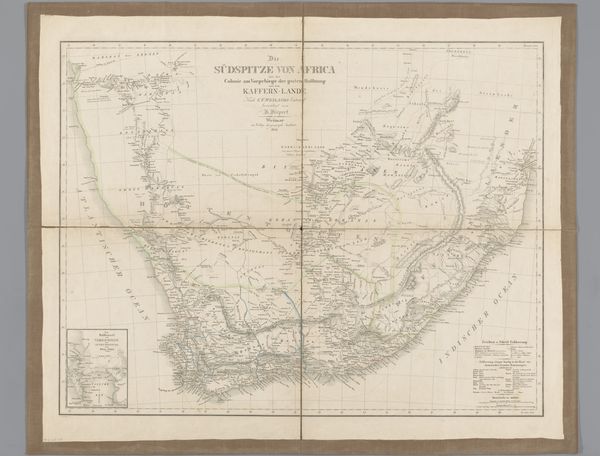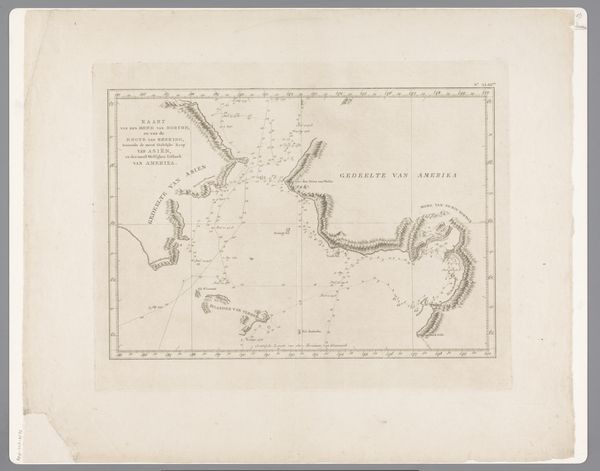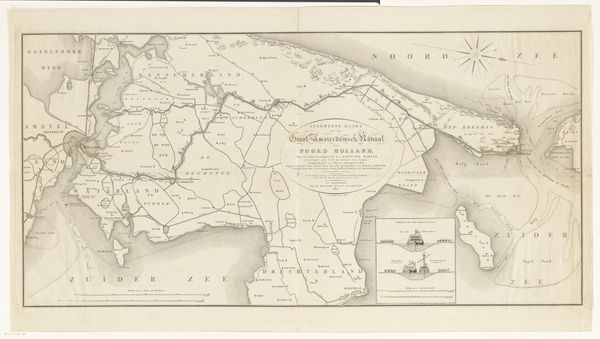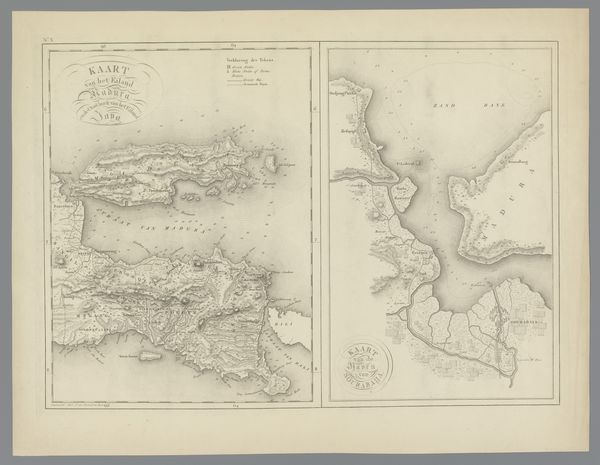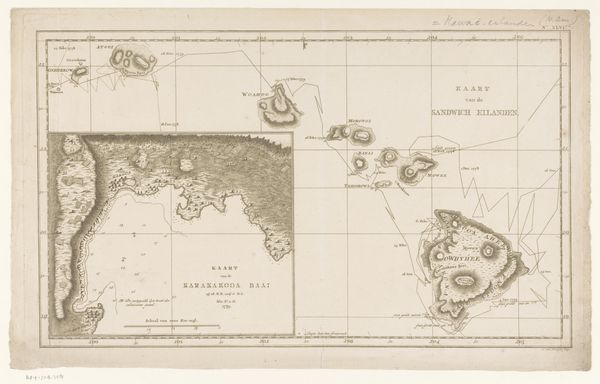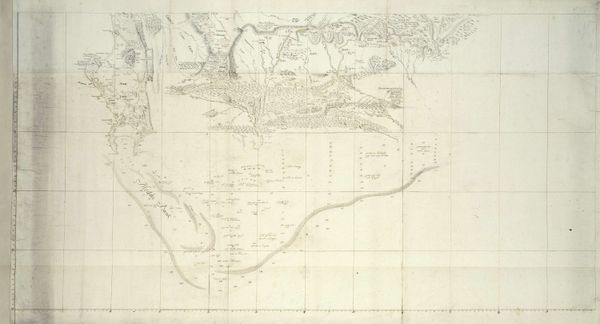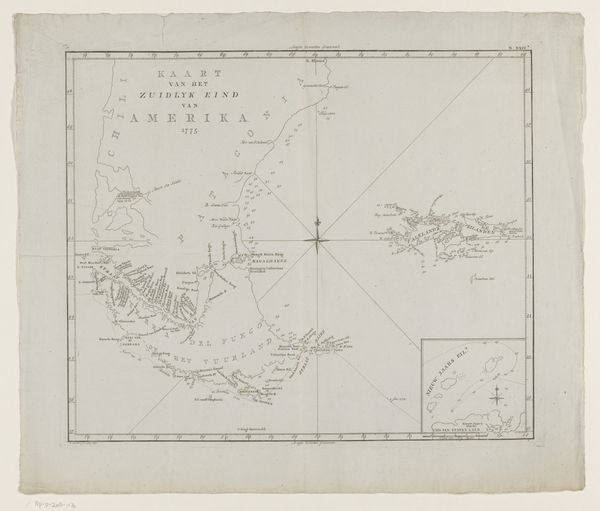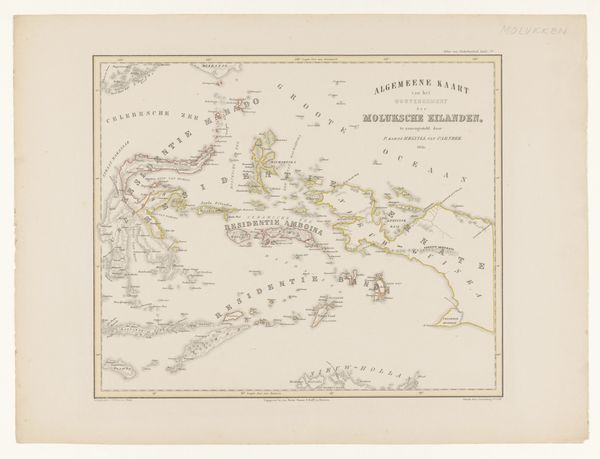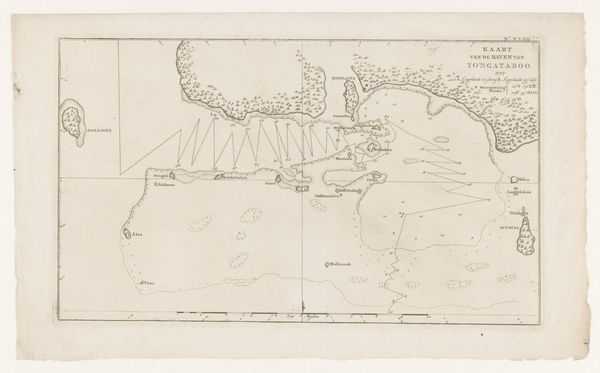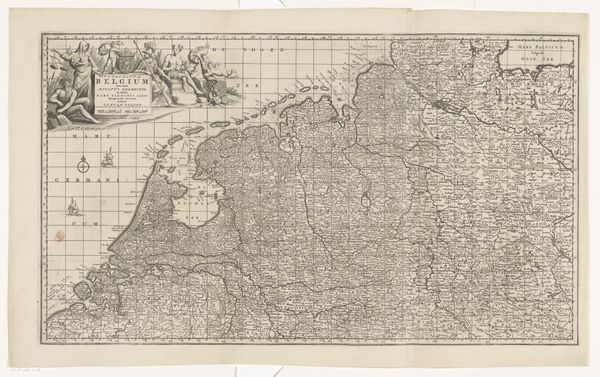
print, engraving
#
aged paper
# print
#
geometric
#
orientalism
#
history-painting
#
engraving
Dimensions: height 444 mm, width 558 mm
Copyright: Rijks Museum: Open Domain
Editor: This is a portion of a map, "Kaart van Nederlands-Oost-Indië, deel rechtsonder," created in 1847 by Franciscus Josephus Ensinck. It's an engraving, and the aged paper gives it such a delicate feel. The fine lines of the cartography are really captivating. What do you notice about the composition and structure of this piece? Curator: Focusing on purely visual elements, note the calculated arrangement of voids and volumes. The sea, largely unmarked, serves as a negative space, throwing into sharp relief the highly textured rendering of landmasses and coastlines. Observe how the visual hierarchy seems dictated not by geographical scale, but rather by the density of inscribed detail, implying areas of strategic concern. Editor: So, it's about where the artist chooses to focus the detail? Curator: Precisely. Detail functions almost as visual currency within the composition. The calculated application and absence thereof create a push and pull, directing the eye and implying a nuanced understanding of power dynamics and geographic emphasis. Notice, for example, how different landmasses and islands are described using varying levels of meticulous detail. Editor: That's fascinating. It makes you think about the priorities being set in the mapmaking process. Curator: Indeed. The structure encourages contemplation on what’s prioritized through visual representation and what is effectively rendered silent or minimized. What is represented—and the manner of its representation—serves as an aesthetic reflection. The formal elements serve as a study. Editor: I hadn’t thought about it that way, focusing on the language of lines and spaces rather than just seeing it as a historical document. It makes me appreciate the piece on a totally new level.
Comments
No comments
Be the first to comment and join the conversation on the ultimate creative platform.
